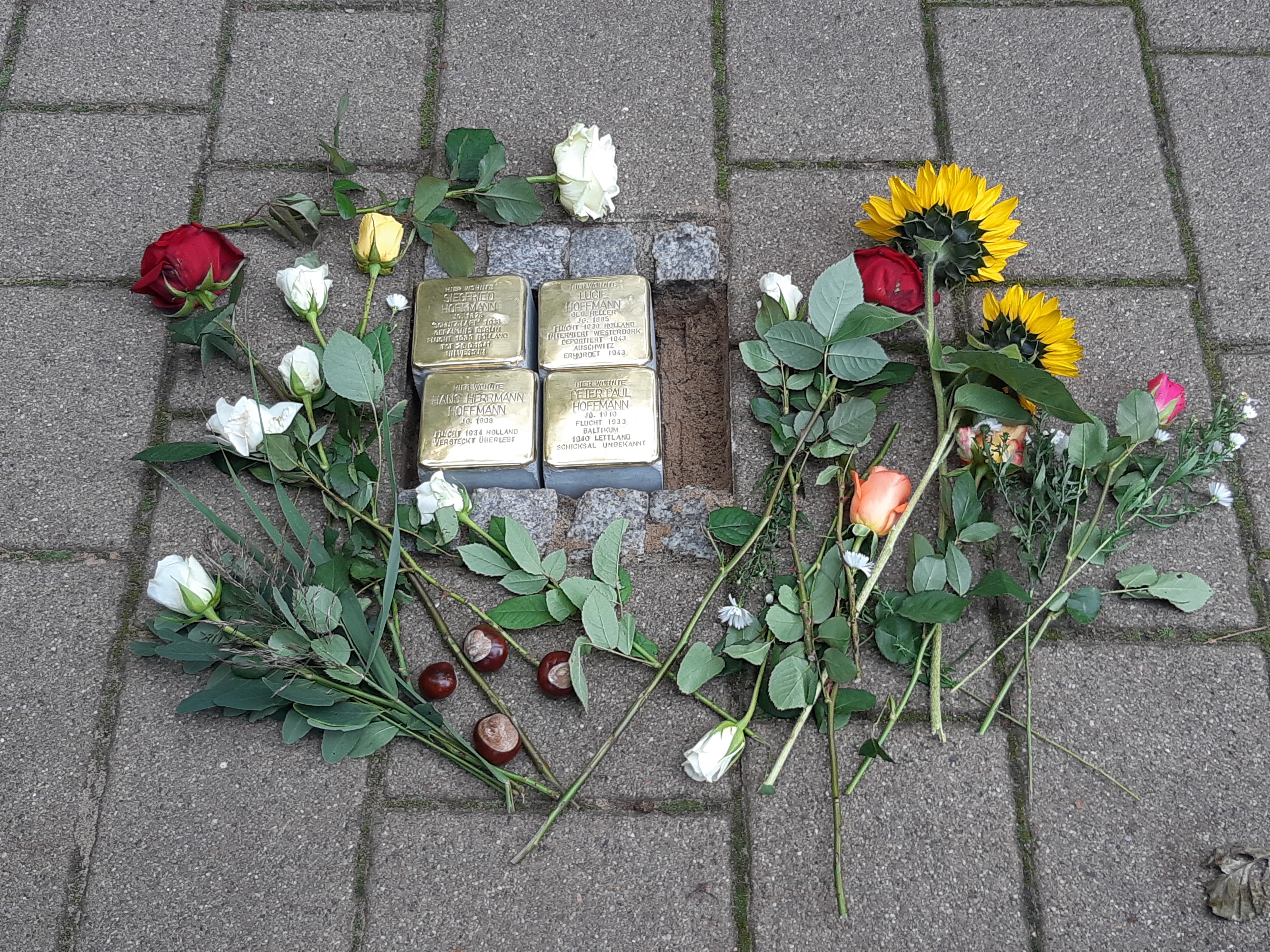Research

At the beginning of the Stolperstein project there is a lot of research to be done. Keep in mind that Stolpersteine is an art project that deals with active commemoration. Historical research for the Stolperstein should go beyond the collection of data and thus remind us of the life of that particular person. Merely copying information from memorial books is not what it is about. At the same time, it is not a scientific project that aims to produce long and possibly incomprehensible texts. It is meant to remind us of the stories and the lives of former local citizens.
Try to initiate a conversation in the neighbourhood. Approach former and current residents, local associations, religious communities, political parties, schools, training institutions, colleges and universities. Seek contact with local historians, historical societies and academics of historical or specifically Judaic studies at regional universities.
Make enquiries about:
- People: family members, friends, classmates, work colleagues
- Places of residence: the street, the flat in the house, other addresses in case of moves, changes to street names and layout of some areas
- Family: births, baptisms, weddings, anniversaries, deaths, name changes
- Education and career: school and professional qualifications, occupations, academic studies
- Events: changes after 1933, response to National Socialist politics in the community
When researching you should start on site and then go from there. If possible, interview contemporary witnesses or their descendants. One possible approach could be:
- Identify individuals and families for whom a Stolperstein is to be set: If the names and the place of residence are already known, the research focuses on further family members or house residents. However, it is also possible to initiate a Stolperstein project by researching the history of one or several houses during the National Socialist era. On the website of the Federal Archives (http://www.bundesarchiv.de/gedenkbuch) you can find the names of persecuted Jews. You can begin researching here, by name or place of residence. However, no specific addresses are given on this website. Access to the files and the addresses can be obtained through the Brandenburg State Archives or through local archives or museums.
- On-site investigation: First look for information in the immediate vicinity of the place of residence. Ask for family members, contemporary witnesses and former residents of the house and the street.
- Research in available publications: Contact local history museums, historical societies and the municipal, state and national libraries.
- Online research: Start by consulting search engines. Look in the online catalogues of the libraries, especially in the journal collections or in the available online resources. Search for addresses and contact persons.
- Local archives: Try to find documents locally. For example, search through materials from the city administration, the church community, the Jewish community, the registry offices and historical societies.
For contact information on archives and memorial sites check out this website.
You are responsible for the results of your research and the handling of personal data. Therefore, make sure that your source references are complete and check the data researched by others. This is important in order to be able to answer questions at a later date. Furthermore, it saves you from having to search again when you publish your research results.